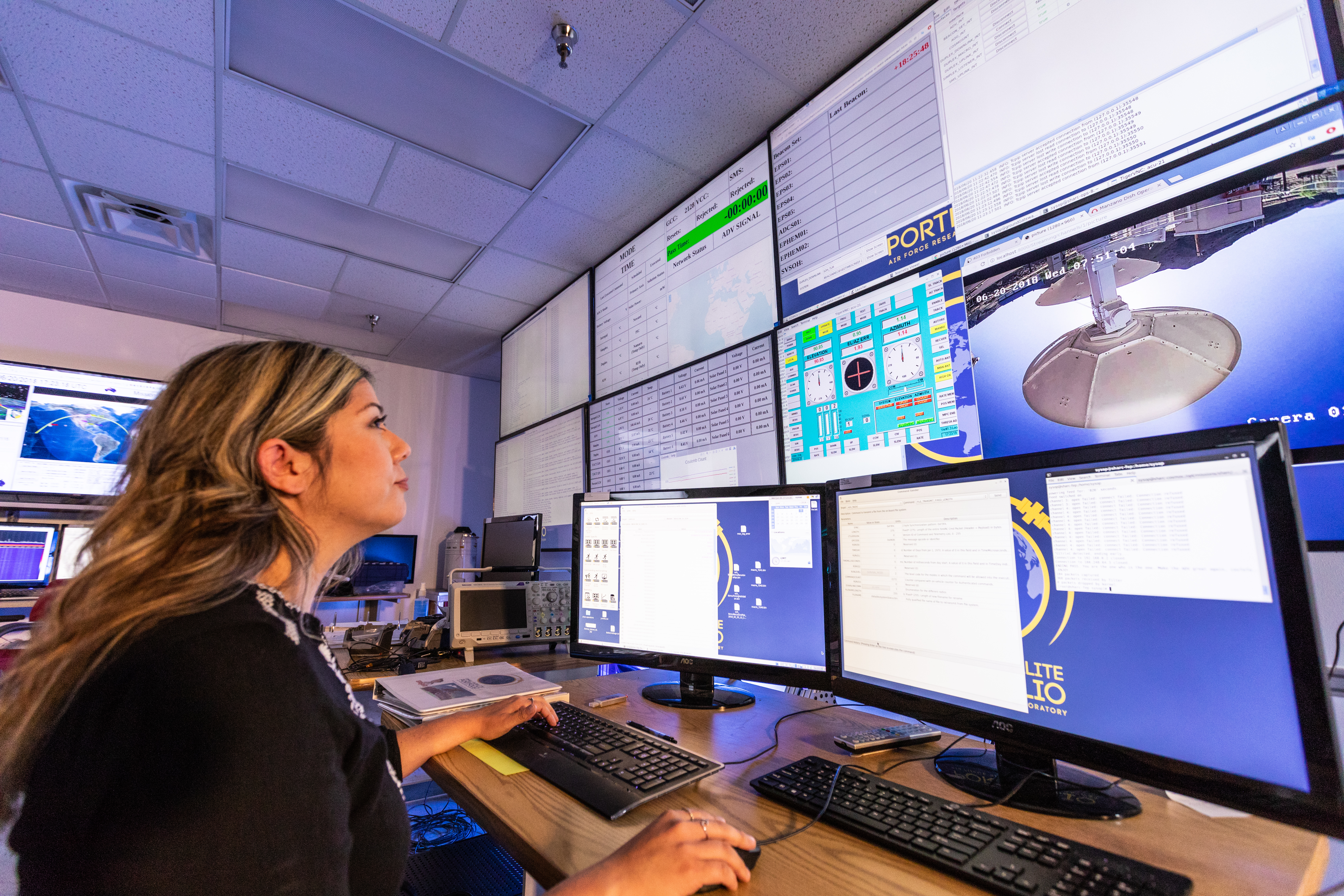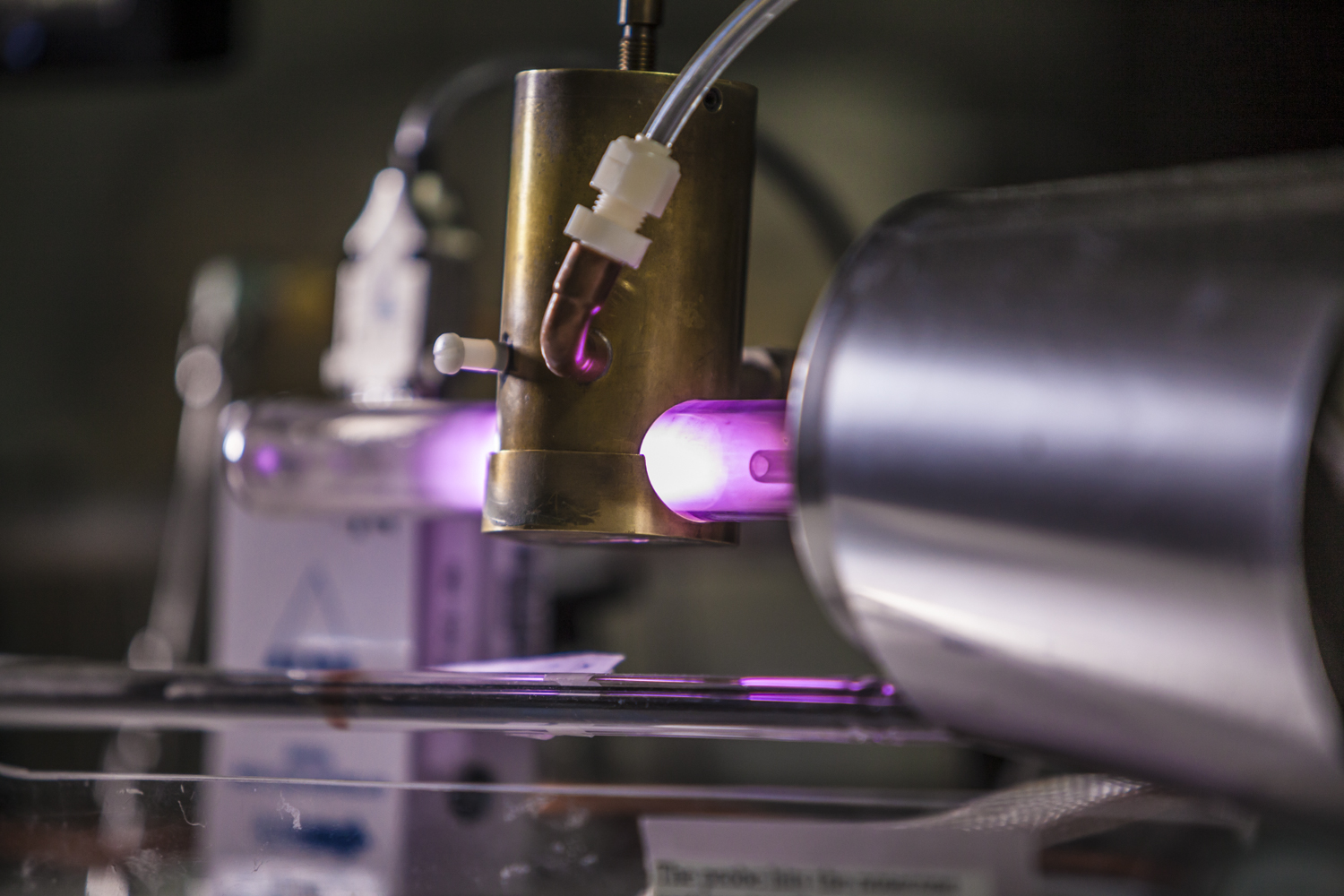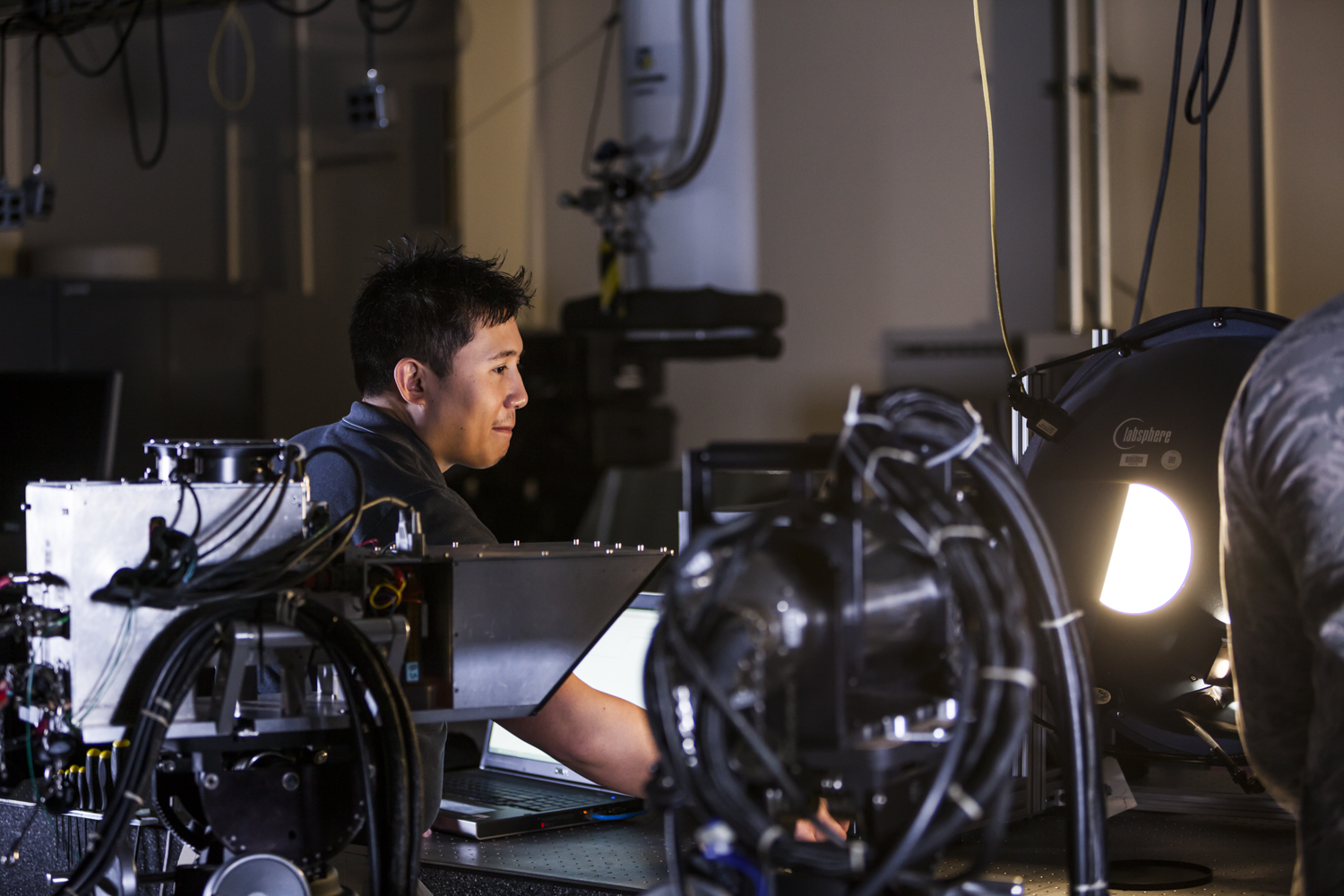
Benjamin Douglas Prince
We use experimental and theoretical tools to examine a broad range of hyperthermal processes including 1) interactions between atmospheric species and surfaces, 2) chemical and electric thruster plumes with atmospheric species, 3) interactions occurring in the plumes of next-generation propulsion technologies and 4) fundamental ion-neutral collision processes. Typical experimental techniques include guided-ion beam tandem mass spectrometry, quadrupole and time-of-flight mass spectrometry, optical emission spectroscopy/spectrometry, laser-induced fluorescence detection and measurement of ion conversion efficiency for atmospheric sensors. The laboratory houses 5 different high vacuum experimental systems and has access to high-performance computing resources for theoretical treatment of experimental results. Areas of current particular interest are experimentation relevant to the re-entry vehicle environment where electronic, vibrational and rotational excited states are common and experimental data is sparse, development and understanding of the microphysics associated with ionic liquid propelled electrospray thruster technology, quantification of processes leading to thruster signatures of in-space propulsion systems, and fundamental charge-exchange physics with an emphasis on quantification of scattering angles, energy transfer, and branching ratios.
Research Focus
Research focus coming soon!
Contact
No contact info to display
Recent Publications
No publications found.
Related opportunities

AFRL Scholars Program
Atomic Oxygen - Surface Interactions (Internship)
Low Earth Orbit (LEO) in Earth's atmosphere contains a number of atomic and molecular species, both uncharged and ions. As a spacecraft operates in LEO, the atmosphere serves as a source of drag on the velocity of the spacecraft leading to altitude variations over time. One significant source of this drag is the atomic oxygen concentration, which can vary significantly with various conditions (e.g. daytime vs nighttime) . The measurement of neutrals often involves instruments with significant size, weight and power requirements which often make it impractical to make in situ space measurements. In this project, the student will examine atomic oxygen collisions with various materials in a high vacuum environment so as to impart a response on either the surface or the oxygen collision partner that can lead to quantification of the number density of atomic oxygen. The student will compare and quantify the measured response to the state-of-the-art capabilities and assess whether these materials improve the state-of-the-art or should no longer be explored.

AFRL Scholars Program
Optical Signatures of Ion-Neutral Collisions (Internship)
The normal operation of electric propulsion devices results in the generation of atomic and molecular ions of various charge, often with significant velocities. These expelled ions can collide with other atomic and molecular components (e.g. Earth's atmosphere, un-ionized propellant) and impart a significant amount of internal energy into the collision partners. This internal energy can be rotational, vibrational and/or electronic and often leads to emission of photons at specific wavelengths. These specific wavelengths occur because of the unique energy levels of the collision partners. While the thruster environment can be relatively complicated, these collisions can be generated in the laboratory under controlled conditions such that quantitative determination of the populations in the various energy levels can be determined. These populations can lead to specific optical signatures that can be used for thruster diagnostics and safety-of-flight purposes.

AFRL Scholars Program
Micro-physics of Electrospray Thrusters (Internship)
Electrospray thrusters using ionic liquid propellants are next-generation propulsion systems that are well-suited for in-space propulsion for small spacecraft. These systems provide unique high-density, low power propulsion capabilities and are envisioned in such missions as the upcoming gravity wave observatory mission (LISA, NASA). The physics occurring at the emission sites of high performance electrospray systems is still ripe for experimental and theoretical exploration designed to improve our understanding of the operation of the devices. In this project, the selected student will either undertake experimental or theoretical approaches to further the understanding of the plume of ions emitted from either (or both) a capillary or externally wetted emitter. Theoretical methods, if the student’s primary interest, might include the use of quantum mechanical and molecular dynamics approaches to the prediction of emitted ion clusters, the lifetime of the clusters, prediction of the plume shape and other observables, modelling in support of experimental data or other related work. Students focused primarily on experimental investigations will utilize mass spectrometry, current-sensing and mass-sensing tools to examine the plume generated from various different propellants or emitter types at relevant volumetric flow rates. Analysis of the experimental measurements will yield insights into trends among the different propellants and improve understanding of the microphysics occurring post-emission in a laboratory thruster.
Media Inquiries
afrl.pa.inquiry@us.af.milBusiness Inquiries
afsbirsttr-info@us.af.milHigher Education Inquiries
collaborate@us.af.milCopyright © 2025 The Air Force Research Laboratory. All rights reserved.
